Ivan Sergei1
1 Mira Str.40-2, 222307, Molodechno Belarus
seriv76@tut.by
The reason for the study of the DLM (#0032) and COM (#0020) meteor showers was a contradiction between the name of the meteor shower from the CAMS video networks and CMOR radar.
1. Introduction
Studying the distribution of meteor radiant sources from the CAMS video networks and Canadian orbital radar CMOR, I paid attention to the fact that different meteoroid streams had radiants at the same position at the sky. Thus, CAMS has the COM radiant in the constellation of Leo Minor, while CMOR detected a radiant for the meteor shower DLM. For example, the Orionids have a radiant at the date of maximum in Orion, the Perseids in Perseus, the Geminids in Gemini, so why the Coma Berenicids (COM) have their radiant in the constellation of Leo, while it should be in the constellation of Coma Berenices. The DLM radiant on the date of maximum is in the constellation Leo, the COM radiant on the date of maximum almost in Coma Berenices (at the junction of the constellations Coma Berenices and Leo). This is logical and correct. Can the radiant of different meteoroid streams be at the same position at the same time? It is possible if it is an optical superposition of two different showers with significantly different geocentric velocities Vg . This study provides
evidence that this is not the case – COM and DLM are two different showers, albeit with similar geocentric velocities.
2. СAMS data
I have studied the distribution of meteor radiants in 2019 and 2020 from the CAMS video networks between December 16 and 21 (Jenniskens et al., 2006;2018). The radiant distribution map shows very clearly a meteor shower with coordinates for December 19, 2020 at R.A. = 160° and Decl. = +31°, identified as COM (#0020). This is a wrong identification! Could the radiant of a meteor shower in the constellation of Leo Minor be a radiant of the Coma Berenicid meteor shower? It is logic to suppose that the radiant of the Coma Berenicid meteor shower is in the constellation of Coma Berenices or at the junction of adjacent constellations, and given that it is an ecliptic shower, it is likely that the radiant is in the vicinity of the constellation Leo. Figures 2 and 3 show the location the Coma Berenicid radiant from December 16 to 21, 2020. We should understand that this is actually the location of the December Leonis Minorids (DLM#0032) radiant. not the Coma Berenicids (COM#0020)!
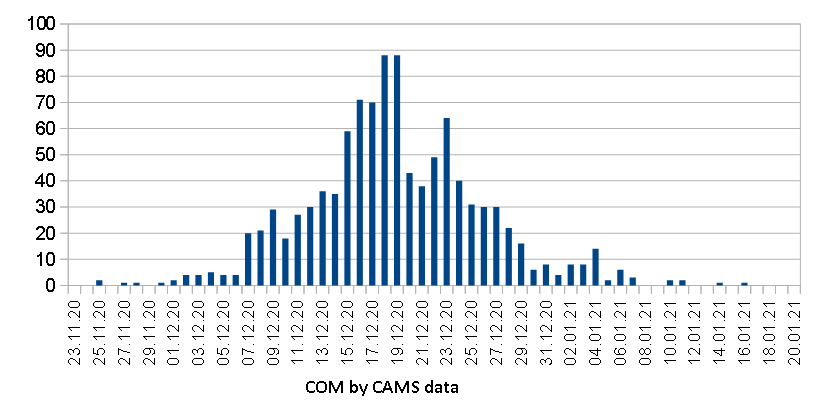
Figure 1 – Activity of COM in 2020 according to CAMS.
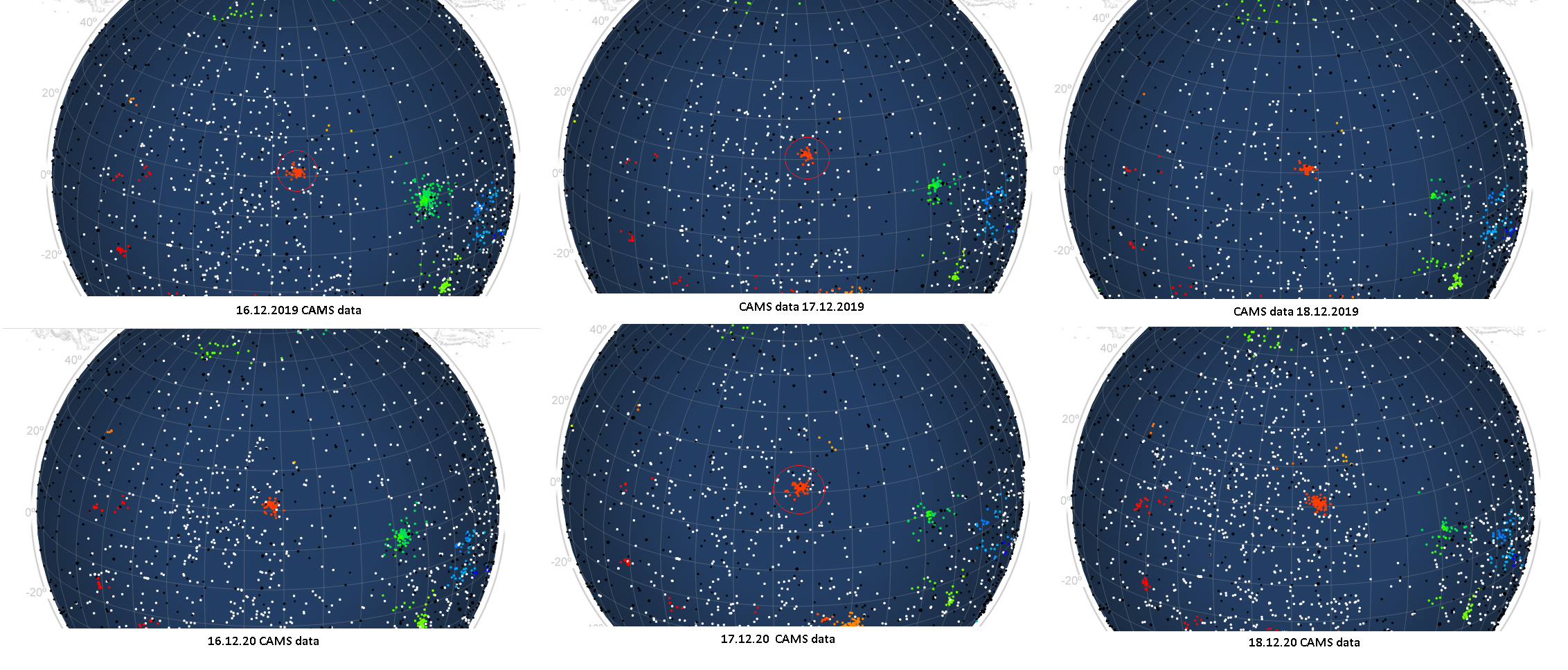
Figure 2 – Radiant position of the COM meteor shower in Sun centered ecliptic coordinates by CAMS data 2020–2021.
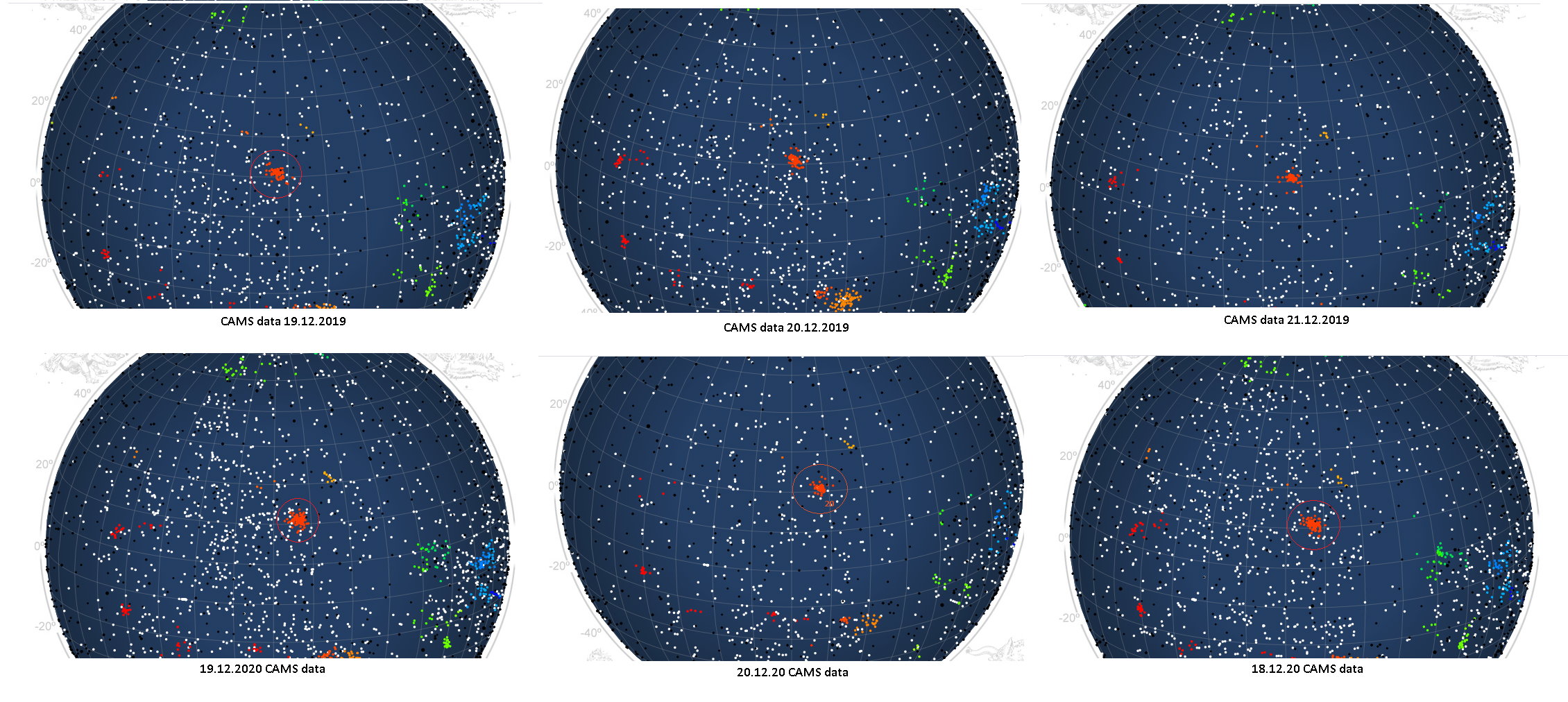
Figure 3 – Radiant position of the COM meteor shower in Sun centered ecliptic coordinates by CAMS data 2020–2021.
I did a search for a probable COM radiant at the junction of the constellations Leo and Coma Berenices and I found no distinct radiant. This indicates that the radiant of the shower is very diffuse and dispersed in space and is being detected by the video
networks as part of the sporadic background.
Figure 1 is a graph of the COM meteor shower activity for the year 2020. Activity is the total number of all meteors of the shower, according to all video networks. You have to understand that this is actually the activity of the meteor shower DLM, not COM. The maximum activity occurred in the interval December 18-19, 2020.
3 CMOR data
The CMOR radar data (Jones et al., 2005) detects more often a DLM radiant than a COM radiant. In some cases, for example, on December 21, 2019, the radar detected and identified a COM and DLM radiant simultaneously. This is a direct evidence for the existence of two meteor showers. CMOR radar data shows a diffuse blurred structure of the COM shower radiant, i.e. this shower is more difficult for radar detection than the DLM, and this may indicate the dispersion of this shower, which will eventually lead to its disappearance. The radar correctly shows the location of the COM and DLM radiants. Some difference with the reference data can be explained by the fact that the radar has access to much fainter meteoroids than the video methods or visual method, from which the reference of this shower was calculated.
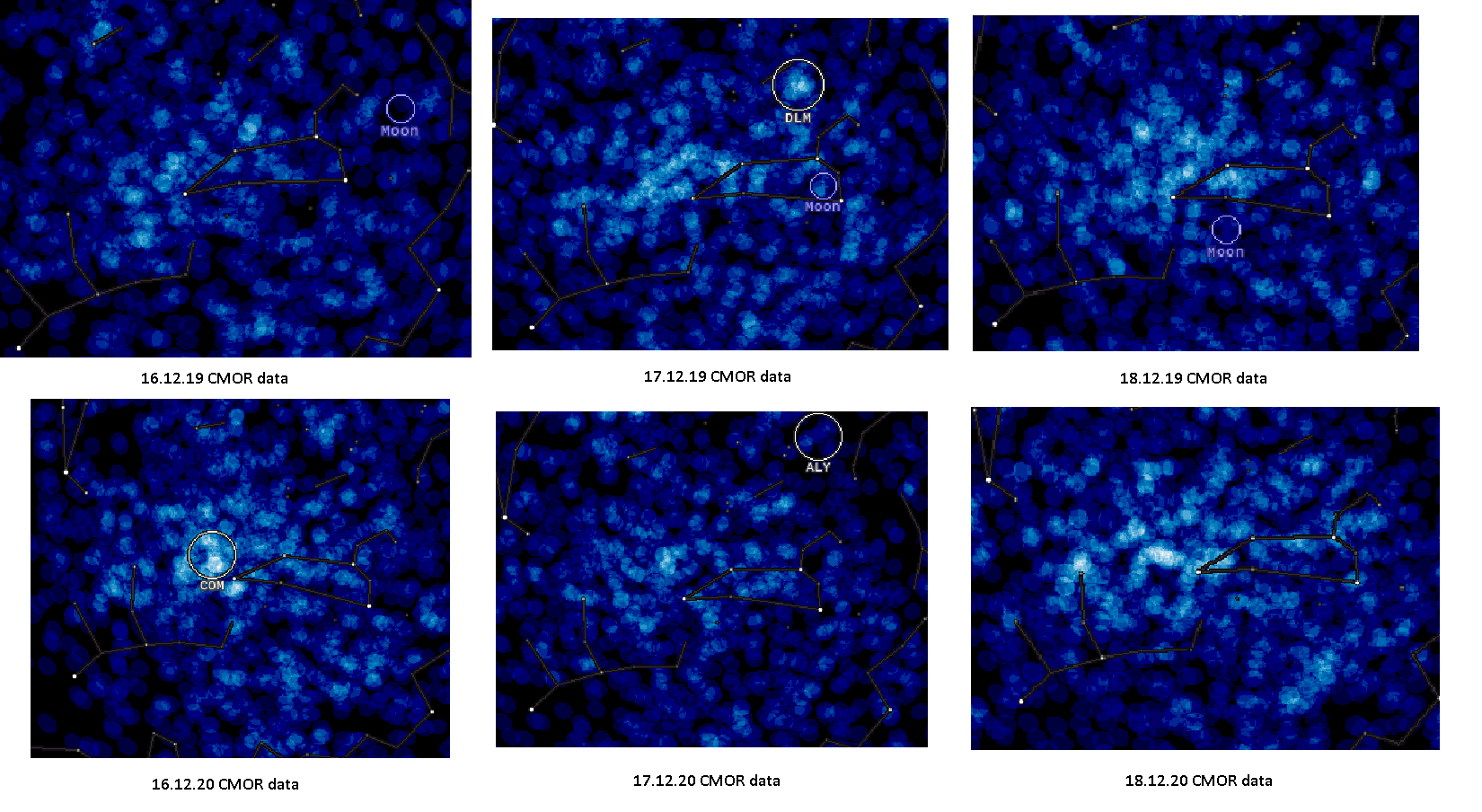
Figure 4 – Radiant position for COM and DLM according to CMOR data 16–18 December 2019–2020.
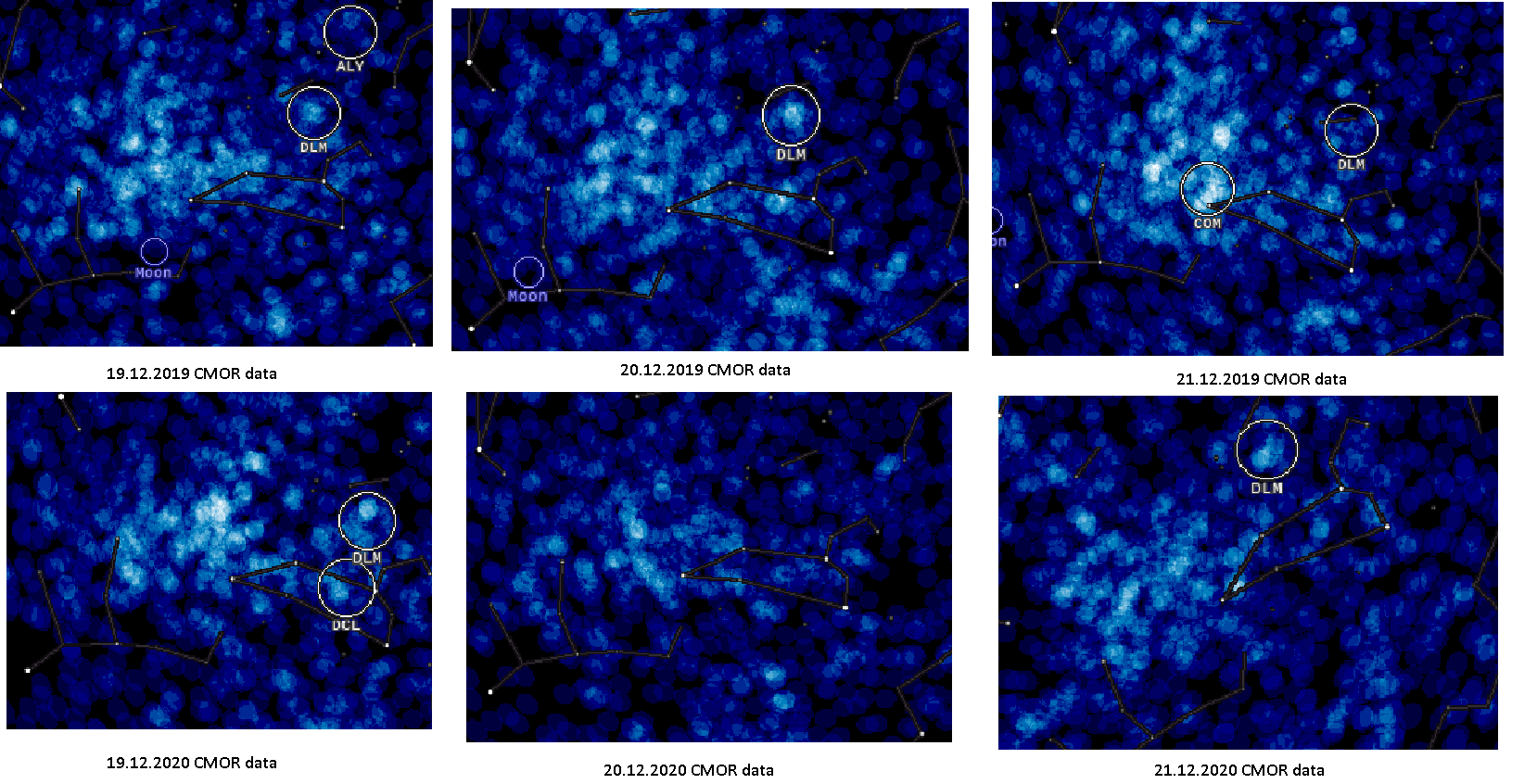
Figure 5 – Radiant position for COM and DLM according to CMOR data 19–21 December 2019–2020.
4 IMO data
The IMO data (VMDB) does not contain any observations of the COM meteor shower. IMO consists of fairly experienced observers, so there is no reason not to trust the IMO visual data. According to the IMO meteor calendar (Rendtel,2020), COM is active December 12–23. One can suppose that few observers observe at this time, because of the unfavorable weather conditions, as the COM radiant culminates after midnight, however VMDB has GEM observations for each year, hence COM observations should be present. This may indicate that the shower is not actually detected visually.
The IMO data (VMDB) contains observations of the DLM meteor shower over the entire history of the IMO. On the IMO website you can see graphs of activity changes of this shower as well as tabular data. The IMO meteor calendar gives information about the COM meteor shower, there is a radiant drift table, but no observations of this shower! So maybe in fact the mystical shower is COM and not DLM? Curiously, the earlier editions of the calendar show the location of the radiant about 8 degrees further south than the later versions, as well as different peak dates. For example, the 2005 maximum is on December 19, R.A. = 175° Decl. = +25°, while the 2019 maximum is on December 16, R.A. = 175°, Decl. = +18°. The inconsistency in the location of the radiants may confirm the idea of a strong dispersion of the meteoroid stream in space. Radiant drift maps (Figure 6-7) are from the Meteor Shower Calendar (McBeath, 2014).
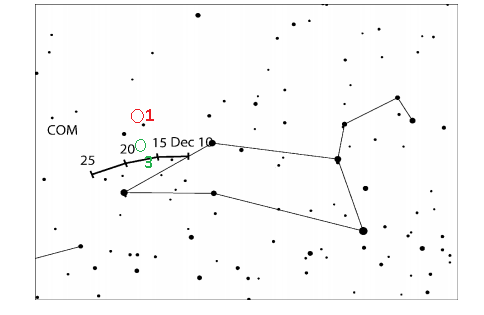
Figure 6– Radiant drift COM by IMO Meteor Shower Calendar.
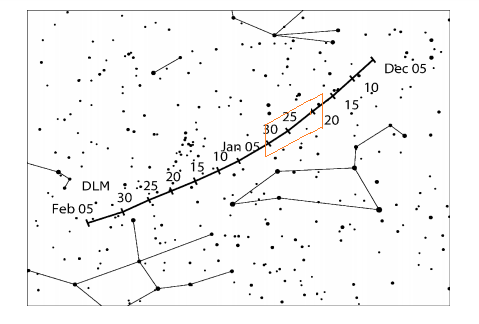
Figure 7– Radiant drift DLM by IMO Meteor Shower Calendar.

Figure 8– Activity DLM from visual IMO data 2019-2020.
Molau and Rendtel (2009), based on IMO video network data in his paper concludes: “The conclusion from our analysis is clear: there are two showers. We find COM (#0020) for 260°–271° (December 12–23) and the other, slightly stronger DLM (#0032) in the period 253°–315° (December 5 – February 4).” The IMO VMDB database contains observations of the DLM since 1989. It is quite possible that this is a confirmation of the existence of this meteor shower.
5 IAU MDC data
The IAU MDC data contains information about two meteor showers at once. This is incorrect. Figure 9 shows the IAU MDC data. There are two pairs of records. I have highlighted them in red (Jenniskens, 2006) and in green (Molau et al., 2009). The same shower cannot have two radiants at an angular distance of about 10 degrees.
After the “DE” column in Figure 9, the correct identification of the meteor showers is marked. In the IAU MDC, the DLM shower is listed as a removed shower. This is incorrect! The DLM is consistently active and is well detected by CAMS video networks. The COM shower is not detected by CAMS video networks, but that doesn’t mean it can be inactive and should be put in removed showers. In 2016 Jenniskens gives Δδ = –0.39°. In the 2006 paper, he gives the coordinates of the radiant λ ʘ = 274°, R.A. = 175.2°, Decl. = +22.2°, and a second radiant with λ ʘ = 262.2° R.A. = 156.1°, Decl. = +32.7°. If these are the same meteor shower, then Δδ = –0.87°, which contradicts the Δδ = –0.39° determined by Jenniskens in 2016. Hence, the researcher in 2006 gives information in the IAU MDC about two meteor showers! Figure 6 shows the locations of the radiants from the IAU MDC Table numbers 1 and 3. The most likely classification of the radiant is COM. Figure 7 shows in light red the location of the other 7 radiant in the IAU MDC records. The most likely classification of the radiants is DLM. Entry number 1 in the IUA MDC table (Jenniskens, 2006) gives the radiant for λ ʘ = 274° (December 26), a radiant closer to the calculated COM radiant, and quite far from the calculated DLM radiant, therefore this entry is shown in the table with a question mark.

Figure 9– Data for COM, DLM in IAU MDC data.
6. Conclusion
CAMS video networks have blindly taken the situation as true from the current IAU MDC data, which is incorrect. IMO and CMOR did not use IAU MDC data, so their data is correct. In the IAU MDC table, the “COM” record includes two showers COM and DLM. It is necessary to separate these entries into two showers separately, COM and DLM. The current entry is incorrect. There are 6 cases with DLM data in this record and 2 cases with COM records. Undoubtedly realistically there are two meteor showers COM and DLM. COM consists of smaller particles (a diffuse and dispersed shower), so it is virtually undetectable by CAMS video networks, but well-detected by CMOR radar, which has access to much smaller particles. DLM consists of larger particles (it is an annual meteoroid stream with more or less constant weak activity), so it is well detected by CAMS video networks, and it is also clearly visible on CMOR radar maps. We can also conclude that the matter in the COM shower is not distributed very evenly over the orbit, and in some years it becomes within reach for the video observing method (Molau and Rendtel, 2009). A definitive conclusion about these meteoroid streams can be drawn from the latest orbit data from CAMS video network observations and from the most recent radar (orbit) data. Unfortunately, I do not have access to such data and my conclusions reflect my personal point of view. My conclusions are confirmed by Masahiro Koseki (Koseki, 2021), who conducted an analysis of orbits.
ACKNOWLEDGEMENTS
I thank Paul Roggemans and Juergen Rendtel for the recommendations and advice on this article.
REFERENCE
Jenniskens P. (2006). “Meteor showers and their parent comets”. Cambridge, UK: Cambridge University Press.
Jenniskens P., Gural P.S., Dynneson L. , Grigsby B. J. , Newman K. E., Borden M., Koop M., Holman D. (2011). “CAMS: Cameras for Allsky Meteor Surveillance to establish minor meteor showers”. Icarus 216, 40–61.
Jenniskens P., Baggaley J., Crumpton I., Aldous P., Pokorny P., Janches D., Gural P. S., Samuels D., Albers J., Howell A., Johannink C., Breukers M., Odeh M., Moskovitz N., Collison J. and Ganjuag S. (2018). “A survey of southern hemisphere meteor showers”. Planetary Space Science, 154, 21–29.
Jones J., Brown P., Ellis K. J., Webster A. R., CampbellBrown M., Krzemenski Z., and Weryk R. J. (2005). “The Canadian Meteor Orbit Radar: system overview and preliminary results”. Planetary and
Space Science, 53, 413–421.
Koseki M. (2021) “The actiivity of meteor showers recorded by SonotaCo Net video observations 2007-2018”, “eMetN2021_2”,p.218.
McBeath A. (2014). “Meteor Shower Calendar”. IMO.
Molau, S.; Rendtel, J.A. (2009). “Comprehensive List of Meteor Showers Obtained from 10 Years of Observations with the IMO Video Meteor Network”.WGN, Journal of the International Meteor Organization, vol. 37, no. 4, p. 98-121
Rendtel J. (2020). “Meteor Shower Calendar”. IMO.

